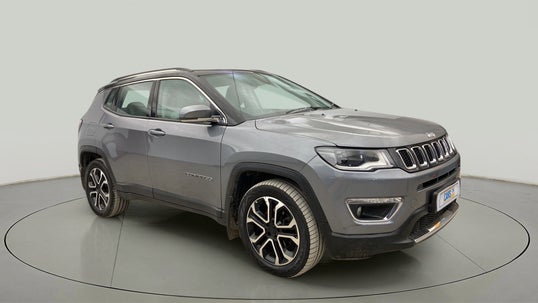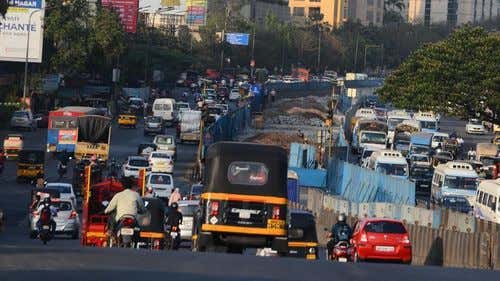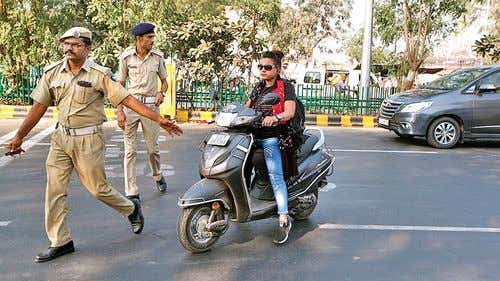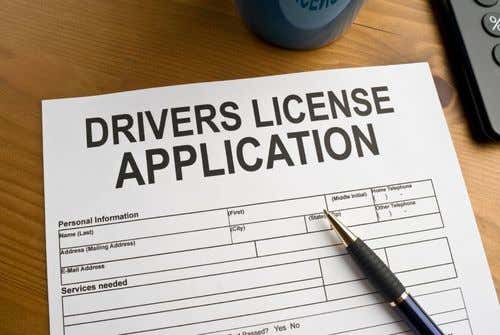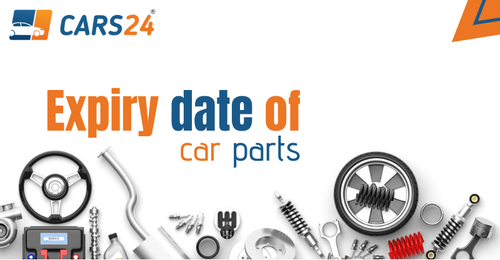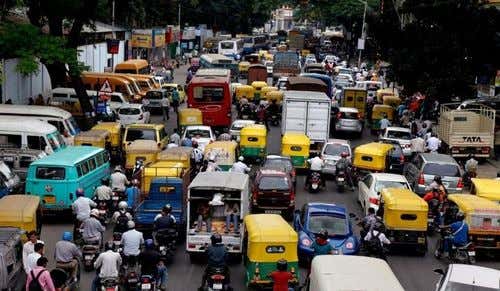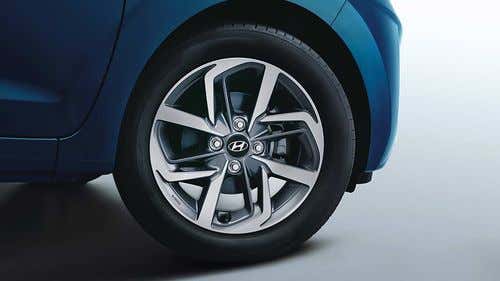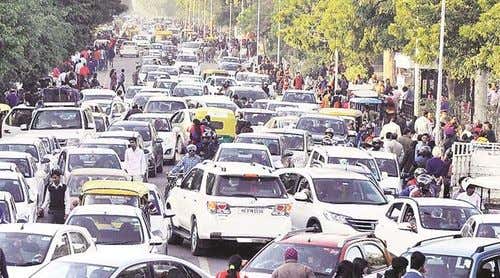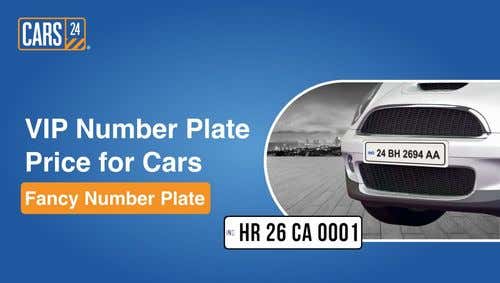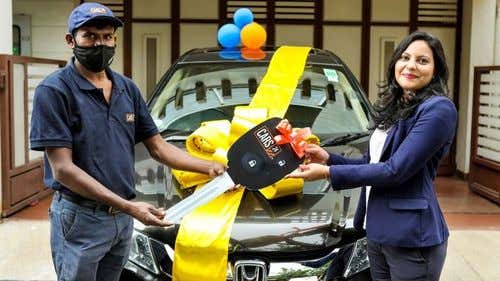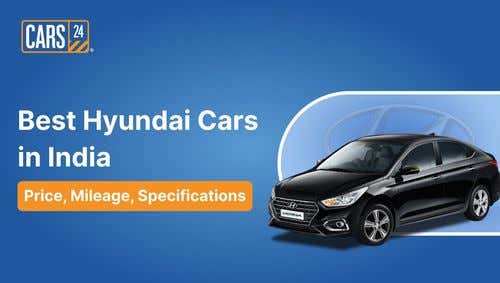Understanding the e-Challan System - A Complete Step By Step Guide

Updated on: 19th February, 2024 IST
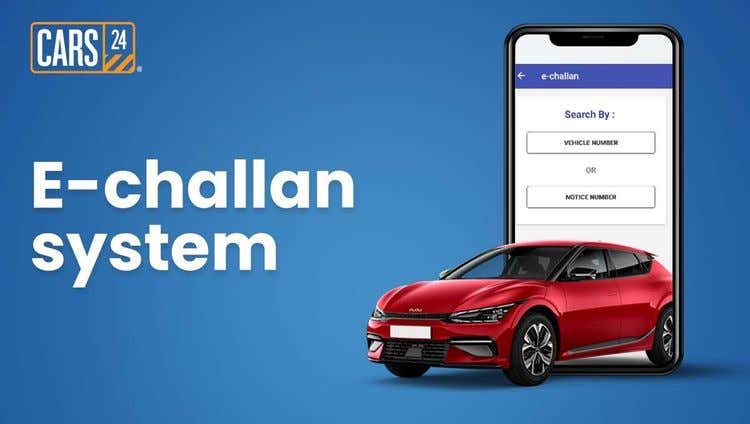
The e-challan system is an electronic system for issuing and tracking traffic challans in India. It was introduced in 2017 by the Ministry of Road Transport and Highways (MoRTH) to improve the efficiency of the traffic enforcement system and make it more transparent.
But what really is this system? How are these e-challans issued? And what type of traffic violations can lead to an e-challan?
From e-challan basics to navigating the maze of traffic fines, we're your co-pilots on this journey through the world of digital fines and safer streets. So, fasten your seatbelt – we're going deep into the e-challan universe, where technology meets traffic rules!
Table of Contents
What is the E-Challan System?
Think of the e-challan system as a tech-savvy traffic enforcer—a digital solution designed to enhance road safety by monitoring and addressing traffic rule violations. Similar to traditional paper challans, e-challans are issued to individuals who flout traffic regulations.
The intriguing twist lies in the digital transformation—the entire process is executed electronically, rendering it faster, more streamlined, and potentially less overwhelming. Rather than the age-old manual procedure, e-challans harness electronic means to identify rule breaches and issue fines.
This modern approach employs cameras, sensors, and digital databases to capture violations like overspeeding or signal jumping. The captured data is then processed by the system, generating e-challans that are swiftly delivered to offenders. This advancement not only expedites the penalty process but also contributes to the overarching goal of ensuring road safety for all.
Key Components of India's E-Challan System
The integration of technology and data enhances the enforcement of traffic rules and contributes to safer road conditions across the country. One such example is the integration of different elements that work together to make sure that the e-challan system works like a well-oiled machine.
Here's a breakdown of the key components of India's e-challan system:
1. Traffic Police
- These vigilant individuals are the heart of the e-challan system
- Trained and equipped, they monitor the streets to ensure road safety
2. Cameras and Sensors
- Think of these as the silent sentinels, strategically positioned at various locations
- These cameras and sensors capture high-resolution images and gather data on vehicles involved in infractions
3. Database and Software
- A sophisticated database holds comprehensive records of vehicle registrations, which allows the system to cross-reference and process violations quickly and accurately
- The software analyses the captured data to identify the nature of the violation
4. Vehicle Registration Database
- This database holds information about every registered vehicle like an encyclopaedia of vehicle ownership and details
- When a violation occurs, this database assists in identifying the vehicle's owner for further action
Also Read: RTO Car Registration Charges
5. Automated Processing
- The captured data from cameras and sensors flows seamlessly into the system's database and software
- The software processes the information and matches it with the vehicle registration database to generate an e-challan
6. Efficiency and Accuracy
- Thanks to automation, the chances of errors caused by human intervention are minimised
- This system ensures that the right violator receives the appropriate e-challan
7. Real-time Monitoring
- The cameras and sensors are operational 24x7, providing continuous monitoring of traffic violations
- This real-time monitoring helps maintain road discipline and safety
8. Integration with Traffic Management
- Some areas have integrated traffic management systems that use the data from e-challans to manage traffic flow and identify congestion points
9. Accessibility
- Traffic police and officials have access to the e-challan system through their devices, enabling them to view real-time data and monitor trends in traffic violations
How Are E-Challans Generated in India?
In a nutshell, India's e-challan generation process is a sophisticated dance of technology, cameras, sensors, and databases. It's designed to swiftly identify traffic violations and issue e-challans seamlessly, making our roads safer and traffic rules respected.
Here's a breakdown of how it all happens:
1. Cameras and Sensors
- Positioned strategically at intersections, pedestrian crossings, and other crucial points, cameras and sensors keep a watchful eye on traffic behaviour
2. Violation Detection
- When a driver commits a violation such as jumping a red light or not wearing a seatbelt, these cameras and sensors instantly capture the moment
3. Image and Data Capture
- A photograph of the violating vehicle is taken, capturing important details like the licence plate number, date, time, and location
4. Data Transmission
- The captured data is swiftly transmitted to a centralised database that houses information about registered vehicles across the region
5. Automated Processing
- The digital constable, in this case, the computer program, kicks into action
- It analyses the image and data to verify the violation, cross-referencing it with the vehicle registration database
6. E-Challan Generation
- If the violation is confirmed, the system generates an e-challan
- This digital notice includes the details of the violation, the fine amount, and payment options
7. Notification Delivery
- The generated e-challan is sent to the registered address of the vehicle owner
- Additionally, notifications might be sent via SMS or email
8. Human Review (Optional)
- In some cases, a human review may take place to prevent errors caused by misinterpretation or technical glitches
9. Efficiency and Accuracy
- The entire process is efficient and highly accurate, minimising the chance of human error and ensuring that legitimate violations are penalised
Types of Traffic Violations Covered
E-challans have a keen eye for a range of traffic sins. From running red lights to over-speeding, not wearing a helmet to not wearing your seatbelt, these digital enforcers leave no rule unturned. Keep in mind, though, that they primarily focus on traffic violations that are easily captured by cameras and sensors.
The recent amendments to The Motor Vehicles (Amendment) Act in 2019 have resulted in substantial increases in fines for various traffic violations. Stricter regulations now mean higher penalties for breaking traffic rules.
Here's a list of violations that can result in an e-challan:
| Traffic Violation | Updated Penalty (From September 2019) | Old Penalty |
| General Offence (e.g., improper number plate, illegal parking) | First time: ₹500Second time: ₹1,500 | First time: ₹100 Second time: ₹300 |
| Not Obeying Orders/Not Sharing Information | ₹2,000 | ₹500 |
| Not Following Road Rules | ₹500-₹1,000 | Nil |
| Driving Without a Valid Driving Licence | ₹5,000 | ₹500 |
| Driving an Unauthorised Vehicle Without a Valid Licence | ₹5,000 | ₹1,000 |
| Driving After Disqualification | ₹10,000 | ₹500 |
| Overspeeding | Light Motor Vehicle: ₹1,000-₹2,000Medium Vehicle: ₹2,000-₹4,000 | ₹400 |
| Rash/Dangerous Driving | First time: Imprisonment of 6 months to 1 year and/or fine of ₹1,000-₹5,000 Second time: Imprisonment of up to 2 years and/or fine of up to ₹10,000 | Nil |
| Driving Under the Influence of Alcohol | First time: Fine of ₹10,000 and/or imprisonment of up to 6 months Second time: Fine of ₹15,000 and/or imprisonment of up to 2 years | ₹2,000 |
| Driving in Mentally/Physically Unfit State | First time: ₹1,000 Second time: ₹2,000 | First time: ₹200 Second time: ₹500 |
| Driving Without Valid Motor Insurance | First time: Fine of ₹2,000 and/or imprisonment of up to 3 months Second time: Fine of ₹4,000 and/or imprisonment of up to 3 months | A fine of ₹1,000 and/or imprisonment of up to 3 months |
| Illegal Racing and Over Speeding | First time: Fine of ₹5,000 and/or imprisonment of up to 3 months Second time: Fine of ₹10,000 and/or imprisonment of up to 1 year | ₹500 |
| Driving Oversized Vehicle | ₹5,000 | Nil |
| Accident-related Offences | First time: Fine of ₹5,000 and/or imprisonment of up to 6 months Second time: Fine of ₹10,000 and/or imprisonment of up to 1 year | Nil |
| Driving Without a Valid Registration Certificate | First time: ₹5,000 Second time: ₹10,000 | Nil |
| Driving Without Permit | A fine of ₹10,000 and/or imprisonment of up to 6 months | Up to ₹5,000 |
| Using Mobile Phone While Driving | ₹5,000 | ₹1,000 |
| Overloading Vehicle | ₹20,000 (₹2,000 per extra tonne) | ₹2,000 (₹1,000 per extra tonne) |
| Overloading Passengers | ₹1,000 per extra passenger | Nil |
| Overloading Two-Wheeler | Disqualification of DL for 3 months and ₹2,000 penalty | ₹100 |
| Not Wearing a Helmet While Riding Two-Wheeler | Disqualification of DL for 3 months and ₹1,000 penalty | ₹100 |
| Not Wearing Seatbelt While Driving | ₹1,000 | ₹100 |
| Not Giving Way for Emergency Vehicles | ₹10,000 and/or imprisonment of 6 months | Nil |
| Offences Committed by Juveniles | Imprisonment of 3 years and ₹25,000 penalty (Vehicle owner/guardian also guilty) | Nil |
| Offence Related to Enforcing Officers (e.g., Offering bribe) | Twice the penalty under the relevant section | Nil |
| Aggregator Offences (Licence-related) | ₹25,000-₹1 lakh | Nil |
| Using Horn in Silent Zone | First time: ₹2,000 Second time: ₹4,000 | Nil |
| Travelling Without Ticket in Public Transport | ₹500 | ₹200 |
Also Read: Types of Traffic Challans
Issuance and Delivery of E-Challans
Once an e-challan is generated, it's sent straight to the vehicle owner's doorstep. Well, maybe not exactly their doorstep, but to the address registered in the vehicle database. You can also receive e-challans via SMS or email.
When an e-challan is generated, the process of notifying the vehicle owner and delivering the e-challan involves several steps. Here's a breakdown of how it works:
1. Digital Generation
- Once a vehicle is captured breaking a traffic rule through cameras or sensors, the relevant data is sent to a central database
2. Data Processing
- The digital constable software processes the data, verifying the violation and cross-referencing it with the vehicle registration database
3. Address Retrieval
- The registered address of the vehicle owner from the database is retrieved
- This address is where the e-challan will be sent
4. Delivery Methods
- In some cases, a printed e-challan notice might be sent to the registered address via postal mail
- Often, an SMS is sent to the registered mobile number of the vehicle owner, informing them of the violation and providing a link to check the details online
- Some jurisdictions also send e-challan notifications through email, containing details of the violation and instructions for payment
5. E-Challan Details
- The e-challan notice includes details of the violation committed, the date, time, and location of the violation, the amount of the fine to be paid, the payment methods, and the due date
Read More: Check & Pay Traffic e-Challan online
6. Payment Options
- Vehicle owners can typically pay the e-challan fine through online payment gateways, mobile apps, or designated payment centres
7. Contesting E-Challans
- If the vehicle owner believes the e-challan is incorrect, there are provisions to contest it through the prescribed channels
- This might involve providing evidence to support their claim
Challenges and Concerns
While the e-challan system is a step towards safer roads, it's not without its hurdles. It's important to acknowledge these challenges and work towards refining the system to ensure that it operates efficiently, and accurately, and respects the privacy and rights of all motorists.
Here's a closer look at the challenges and concerns that come with this digital traffic enforcement:
1. Incorrect Fines
- Sometimes, the system can misread licence plates due to various reasons like poor lighting or unclear images
- This can lead to innocent motorists receiving fines they don't deserve
2. Technical Glitches
- Just like any technology, the e-challan system can experience technical glitches, causing errors in capturing and processing data
- These glitches might result in wrong fines being issued
3. Data Privacy
- Many individuals are rightly concerned about their data
- They worry about who else might have access to their vehicle and location information stored in the e-challan system
4. Appeal Process
- The process to appeal an incorrect e-challan can be a bit convoluted
- Usually, it involves visiting a police station, submitting documents, and waiting for resolution, causing inconvenience to the innocent
5. Limited Violations
- The system currently focuses on violations that can be captured by cameras and sensors, leaving out other types of violations that might not be as technology-friendly
6. Lack of Awareness
- Some drivers might not even be aware of the existence of the e-challan system, leading to confusion when they receive a fine unexpectedly
Benefits of the E-Challan System
In essence, the e-challan system transforms the traditional ticketing process into an efficient, transparent, and technologically advanced mechanism that encourages responsible driving and safer roads. Embracing the e-challan system in India comes with a bouquet of advantages that enhance road safety rules and streamline law enforcement.
Let's take a closer look at some of its benefits:
- With cameras and sensors strategically positioned, it's becoming easier to capture infractions with accuracy, ensuring that errant drivers are held accountable
- By diminishing face-to-face interactions between motorists and law enforcement officers, the scope for corruption becomes diminished
- Both time and resources are conserved as law enforcement personnel can focus on more critical tasks, while motorists can make quick online payments, negating the need for prolonged visits to police stations
- The online system is transparent and impartial and fines are generated based on objective data captured by cameras and sensors, eliminating subjective judgments
- E-challans embrace the digital age, offering convenience as updates and notifications can be sent via SMS or email, allowing drivers to be promptly informed about violations and penalties
- The digital nature of e-challans reduces paper usage, aligning with environmental sustainability efforts
- The e-challan system brings uniformity across different regions of India as standardised procedures and fines are applied, promoting a cohesive approach to traffic management
Future of the E-Challan System
The future of the e-challan system in India is promising, with exciting advancements on the horizon. As technology continues to evolve, we can anticipate a seamless blend of innovation and traffic management.
Automation is set to take centre stage, making the process of identifying violations even more efficient. Imagine smart cameras that instantly detect traffic rule breaches, further reducing the need for manual intervention.
Moreover, the accuracy of e-challans is poised to improve significantly. With sophisticated algorithms and data analytics, the chances of erroneous fines are likely to decrease, ensuring a fair and just system.
Additionally, the integration of e-challans with other cutting-edge traffic management technologies could mean real-time connectivity between traffic signals rules and vehicles, optimising traffic flow and minimising congestion.
At this dynamic juncture, the e-challan system is primed to play a pivotal role in shaping safer, smarter roads across India. As we embrace these advancements, our commitment to adhering to traffic rules and ensuring road safety remains as crucial as ever.
The Bottom Line
In a nutshell, the e-challan system is India's way of saying, "Hey, let's drive towards a greener and safer tomorrow!" It's a digital upgrade to the old paper challans, designed to catch and penalise traffic rule violators using cameras, sensors, and clever software. While it's not without its challenges, the system's benefits in terms of efficiency, accountability, and road safety are undeniable.
FAQs
Q. How does the E-Challan system work?
The e-challan system uses cameras, sensors, and a digital database to catch and penalise traffic rule violators electronically. When you break a rule, your vehicle's details are captured, and an e-challan is generated and sent to you.
Q. Can I contest an E-Challan if I believe it's incorrect?
Absolutely! If you believe you've received an incorrect e-challan, you can contest it by following the instructions provided on the e-challan notice.
Q. What are the consequences of not paying an E-Challan?
Ignoring an e-challan isn't a good idea. It can lead to fines escalating and potential legal actions against you. It's best to pay the fine or contest the challan if you believe it's unfair.
Q. Are all types of traffic violations captured by E-Challans?
E-challans primarily focus on violations that can be captured by cameras and sensors, such as red light violations, over-speeding, and not wearing seatbelts or helmets.
Q. How can I check if I have any pending E-Challans?
You can check for pending e-challans by visiting the official website of your state's traffic police or using a dedicated app if available. Provide your vehicle details to get the information you need.
Recently Added Cars to Buy
Other Blogs
- Recent
- Featured
Popular Cities to Sell Car







